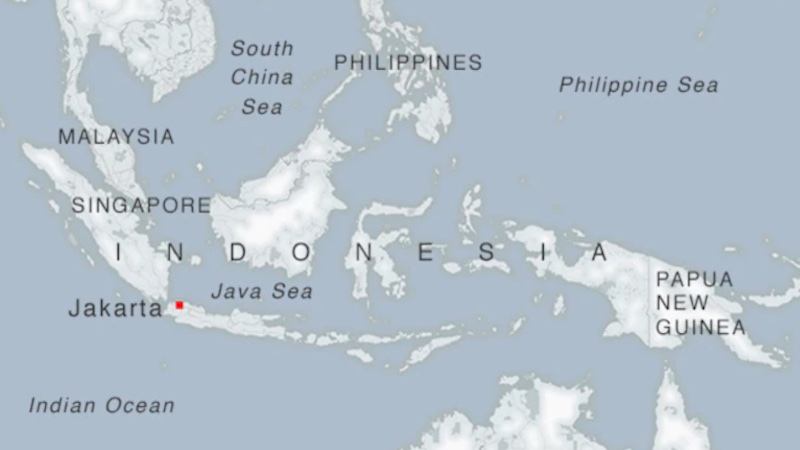South China Sea: Rising Tensions And The Quest For Peace – OpEd

The South China Sea is currently experiencing escalating tensions and complex geopolitical dynamics involving China, ASEAN, and other international stakeholders. The purpose of this analysis is to evaluate the current situation in the South China Sea as of July 2024, assess China's position, discuss the response of ASEAN nations, and explore potential resolutions to this multifaceted conflict.
The South China Sea is a major geopolitical hotspot due to territorial disputes between China and several Southeast Asian countries, including the Philippines and Vietnam. Recent incidents, such as intentional collisions and boardings of Philippine naval vessels by Chinese Coast Guard personnel, resulting in injuries to Filipino sailors, have heightened tensions. However, diplomatic discussions between China and the Philippines are currently taking place to address these tensions through bilateral consultation mechanisms.
It is important to note that China's territorial claims, represented by the "nine-dash line," cover almost the entire South China Sea and intersect with the exclusive economic zones of multiple Southeast Asian nations. However, an international tribunal ruling in 2016 invalidated this claim, which China continues to reject. To further complicate matters, China has recently extended its claim of sovereignty with the introduction of a newly added tenth dash line, which has provoked discontent among other nations. Recent events, such as the obstruction of a Philippine resupply mission to the Second Thomas Shoal, have worsened the conflict and led to numerous diplomatic protests by the Philippines against China. The situation is further complicated by broader regional and international factors, including the involvement of the United States as an ally of the Philippines, and the Philippines' efforts to secure UN confirmation of its seabed rights in the disputed waters.
China's stance on the South China Sea is characterized by firm assertions of sovereignty, strategic actions to establish dominance, and diplomatic engagement initiatives. Beijing contends that its activities in the region are lawful and aimed at safeguarding its territorial sovereignty. It underscores its willingness to address differences through dialogue and cooperation with ASEAN countries. Nevertheless, China's actions are perceived as part of a wider strategy to achieve dominance in the area, including assertive maritime activities and the use of force to impede resupply missions by other claimant nations.
Despite this assertive posture, China has been involved in diplomatic discussions with the Philippines and other countries to de-escalate tension and foster regional stability. The response of the Association of Southeast Asian Nations (ASEAN) to the South China Sea issue demonstrates a clear division and a collective emphasis on peace and stability. Several ASEAN member states, including the Philippines, Vietnam, Malaysia, and Brunei, openly oppose China's claims in the region. However, Cambodia and Laos take a more cautious stance due to their economic ties with China.
ASEAN as a whole urges all parties to refrain from actions that could further tensions and emphasizes the importance of maintaining regional peace and stability. Nevertheless, internal divisions within ASEAN and differing levels of dependence on China among its member states hinder the bloc's ability to present a unified front.
Various approaches can be considered to address the escalating tensions in the South China Sea. One approach is strengthening multilateral dialogue mechanisms within ASEAN and involving external actors such as the United States and Australia. This can facilitate the development of a consensus on rules-based order in the region. Another approach is to enhance transparency and communication channels with countries with territorial claims. This can effectively prevent misunderstandings and inadvertent escalations. Additionally, promoting joint agreements for resource and exploration management can provide economic incentives for cooperation rather than conflict. Lastly, leveraging international legal frameworks and institutions such as the United Nations Convention on the Law of the Sea (UNCLOS) can facilitate the resolution of disputes through legal and diplomatic means.
In conclusion, the issue of the South China Sea continues to be a highly contentious and intricate geopolitical matter, marked by escalating tensions between China and Southeast Asian nations. Despite China's assertive actions and fragmented territorial claims, the response from ASEAN underscores the need for a comprehensive and strategic approach to uphold peace and stability in the region.
Finally, to achieve a peaceful resolution to the conflicts in the South China Sea, the involved parties must engage in open and transparent multilateral dialogue, promote joint development, and adhere to international legal frameworks. The active support of the international community is crucial to maintaining the South China Sea as a peaceful, stable, and prosperous zone.
The opinions expressed in this article are the author's own.
References
- BWorldOnline. "China, Philippines Resume Talks on South China Sea Tensions." Accessed July 9, 2024.
- Crisis Group. "Territorial Disputes and Recent Incidents in the South China Sea." Accessed July 9, 2024.
- DW. "ASEAN and International Responses to South China Sea Tensions." Accessed July 9, 2024.
- Voice of America. "China's Maritime Strategy and Incidents with Philippine Ships." Accessed July 9, 2024.
